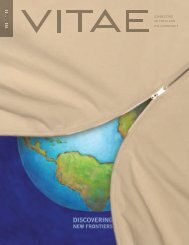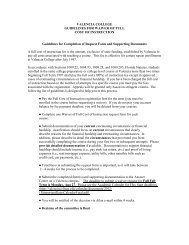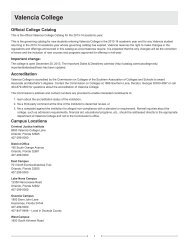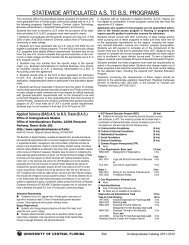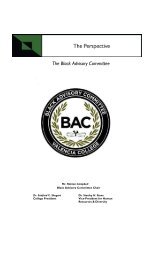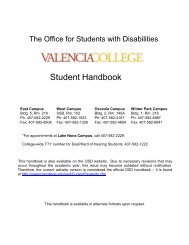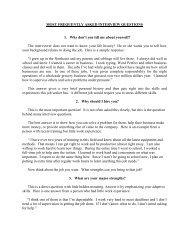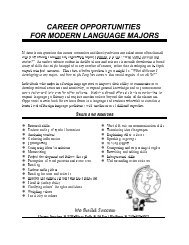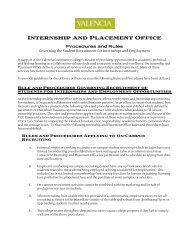Issue 10, 2012 Winter - Valencia College
Issue 10, 2012 Winter - Valencia College
Issue 10, 2012 Winter - Valencia College
You also want an ePaper? Increase the reach of your titles
YUMPU automatically turns print PDFs into web optimized ePapers that Google loves.
Mark Hose:<br />
The Man with the<br />
(Architectural) Plan<br />
By Roger Moore<br />
experts spotlight<br />
An architect’s mission, Mark Hose says, is “to design<br />
a space where when people approach the building, they<br />
have a little hop in their step. They know they want to go<br />
in there. They don’t know why, but they just want to be<br />
there, in that space.”<br />
Hose, architect and facilities planner with <strong>Valencia</strong><br />
<strong>College</strong>, keeps that goal in mind as he works to reshape<br />
the various campuses, with their blend of the new and<br />
the renovated. It’s part of the juggling act his job requires<br />
at a growing college, where some structures are new, but<br />
many more are 30–40 years old and in need of updating.<br />
Hose is a fan of “transparency” in academic<br />
buildings, of adding windows with views to structures<br />
that were once built in an austere, institutional style.<br />
That means he wants West Campus’s bare-walls-facingthe-lake<br />
structures to all have views of that lake.<br />
And that plays into the college’s newer construction<br />
ethos—“green.”<br />
“Building green” was a newish idea when Hose was<br />
in college at San Diego’s New School of Architecture and<br />
Design. It gained popularity during his years with the<br />
commercial architecture firm Baker Barrios, his previous<br />
employer. But it has become a mantra at <strong>Valencia</strong>, where<br />
design efficiencies and system upgrades have helped the<br />
college save some $3.8 million in utility costs during<br />
the past three years. A new “chiller plant” system that<br />
circulates cooling water in a loop through the West<br />
Campus slashed heating and cooling costs by more than<br />
$<strong>10</strong>0,000 a year the moment it came on line.<br />
Hose says that green design seems to be here for the<br />
long run. But that trend has both obvious benefits—<br />
reduced operating costs, smaller carbon footprints—and<br />
a new set of challenges for the designer.<br />
“You still have to worry about functionality. Can<br />
students, faculty and staff use the building the way we’ve<br />
designed it?”<br />
For instance, a hot trend in design is “daylighting,”<br />
where lights are programmed to supplement rather than<br />
replace natural window lighting.<br />
“What happens? Users come in to actually use the<br />
room and they complain about the heat or the glare from<br />
the windows, so they put in blinds. The blinds stay shut<br />
and so much for our ‘daylighting’ efforts.”<br />
But “daylighting” can work in spaces like atriums<br />
and cafeterias.<br />
Other changes are far more subtle. From carpeting<br />
(doing away with toxic adhesives) to tile (made from<br />
recycled drywall waste), <strong>Valencia</strong> is turning greener by<br />
the day, something Hose says makes his job a great one<br />
to have in architecture and design’s Green New World.<br />
“You design houses, green or otherwise, and you’ve<br />
got to please, what, four or five people? A college?<br />
Thousands. Now that’s a challenge.”<br />
14 • Experts Spotlight




